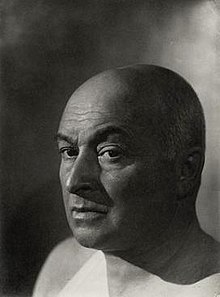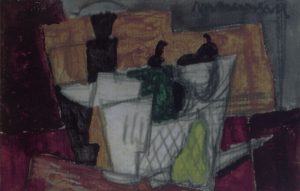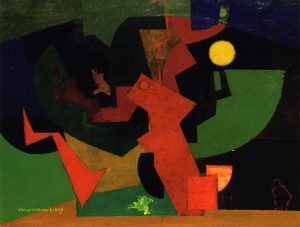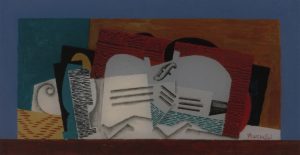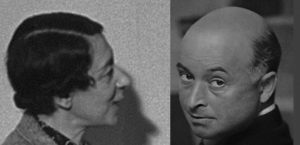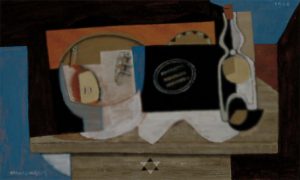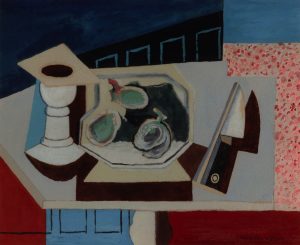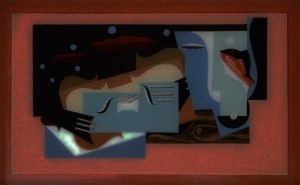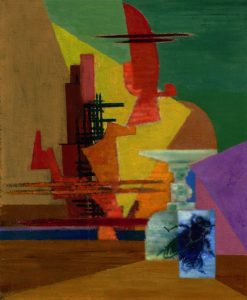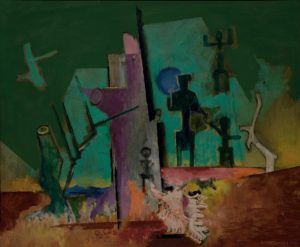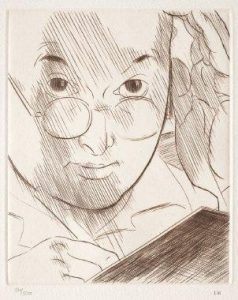Louis Marcoussis was born on the 14th of November in 1878 in Warsaw, Poland.
1878 - 1941
Louis Marcoussis
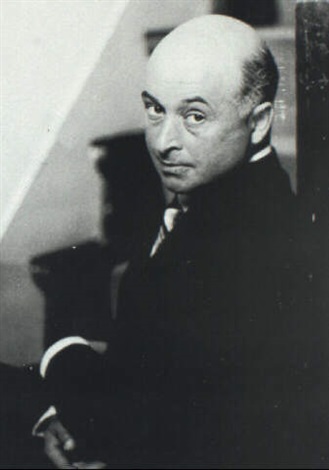
description
A Polish painter, illustrator and caricaturist, who worked in France.
Ludwig Marcus, who changed his name to Louis Marcoussis at the suggestion of his friend Apollinaire, belonged to the group of the first Abstract artists of Europe.
Louis Marcoussis was close to Puteaux, the creative group of artists and poets, and participated in the first exhibition of Cubists named “Golden Section” in 1912. In addition to painting, the artist showed himself as a talented illustrator, cooperating with many Polish and French periodicals, and having illustrated the books of his friends – poets Guillaume Apollinaire and Tristan Tzara. In the 30s, Marcoussis taught engraving at the Modernist Academy in Paris, and spent several years in the US, where he had a significant influence on the development of European modernist trends. The work of Louis Marcoussis is a vivid example of the Parisian Avant-garde art of the first half of the 20th century.
Key ideas:
– In his painting, strict construction and geometric forms of Cubism intertwine with a subtle poetic vision of the author and his individual manner of execution.
– The artist painted still lifes in the Cubist style, as well as portraits, views of Paris and landscapes of the Breton coast. In the author’s works, there is often a marine theme, as well as various musical instruments: violin, cello, guitar.
– The recognizable feature of the artist’s work is an unusual, truncated composition that limits the artistic space, focusing on the center of the picture. Marcoussis mostly used this technique in still-lifes, inscribing objects into a well-defined polygon, and leaving the fields unicolored or divided into several uniformly colored planes. A tranquil palette of gray, muted green, yellow and brown colors emphasizes the harmony of the composition and its harmonious sound.
– After 1920, the artist somewhat changed his manner, simplifying the composition and paying more attention to the materials and the texture of the canvas.
– In many works, Marcoussis came close to synthetic Cubism, using collage techniques and various inscriptions. Human figures and objects in the master’s paintings are separated by an expressive outline, and the planes, covered with soft uniform colors, overlap and penetrate each other.
– The canvases of Marcoussis are very schematic. In them, individual fragments intertwine and pile each other, creating their own world full of fantasy and understatement. Operating with subtle gradations of color and lighting, the artist diffuses bright color accents on the canvas, creating a special aura of poetic metaphor.
1878
1901
1903
1907
1913
1920
1925
1930
1937
1940
1941
The birth of the artist
Entered the painting class at the Krakow Academy of Fine Arts
Refused to study law in Warsaw in order to enter the painting class at the Krakow Academy of Fine Arts. Marcoussis ‘ teachers at the academy were famous Polish painters Jan Stanislavsky and Jozef Mehoffer.
He went to Paris
He went to Paris, where he continued his studies at the private Julien Academy in the studio of Jules Lefevre. The artist settled on the boulevard de Clichy in Montmartre, where he met E.Dega, F.Picabia, M.Dyushan and other famous people. In order to secure his living, he created caricatures for satirical newspapers and magazines. Marcoussis first presented his work at the Autumn Salon in 1905 and at the Salon of the Independent next year.
Cubism
After the creative crisis, during which the artist completely revised his attitude to painting, he changed his style and soon moved on to Cubism. During this period, he met G. Apollinaire, with whom he began to closely associate and who suggested that Marcus should change his surname to French “Marcoussis”. In 1910, the artist became acquainted with many Cubists, especially with Picasso, Braque, Gris and Metzhe. He became a member of the “Golden Section” and exhibited his work with the Cubists.
He married Polish artist Alice Galitski
He married Polish artist Alice Galitski and went with her on a trip to Europe. The couple visited Morocco, Spain and a number of other countries, studying the painting of local masters and folk art. During the First World War, Marcoussis served in the French Foreign Legion until 1919.
After the war, briefly returned to Poland
After the war, briefly returned to Poland, but soon moved to Paris and received French citizenship. Until 1924, the artist traveled a lot throughout Europe, visited England, Belgium, Italy, and also traveled to the United States. Marcoussis participated in an exhibition of Polish art in Paris, organized in the Gallery of the Museum of the Crillon.
The first personal exhibition of the artist
The first personal exhibition of the artist, which was a success, was held at the Pierre Gallery in Paris. The artist began his teaching career – he led an engraving class at the Modern Academy, where Fernand Leger, his comrade-in-arms and like-minded fellow in the Cubist manner of the work, was also a professor.
Taught the art of engraving at the Schlefer Academy in Paris
He worked a lot in various graphic techniques, mainly in engraving, improving his craftsmanship in the technique of etching, aquatint and dry needle. Taught the art of engraving at the Schlefer Academy in Paris. During this period, Louis Marcoussis created illustrations for the poems of T. Tzara, J. Nerval, G. Apollinaire. His solo exhibitions were held in New York at the Knoedler Gallery (twice in 1933 and 1935) and in Brussels at the Palace of Arts in 1936.
The painting of Marcoussis gradually departed from the Cubist tradition
During his trip to London, the artist met Helena Rubinstein, who became his fan and patron. Thanks to Rubinstein, Marcoussis and his wife made a long trip to the US, where they received many orders. The painting of Marcoussis gradually departed from the Cubist tradition, acquiring recognizable features of Surrealism. During these years, the artist communicated a lot and collaborated with Surrealists, close to Cubism – P. Klee and J. Miro.
With the outbreak of World War II, the Marcoussis’ family left unsafe Paris
With the outbreak of World War II, the Marcoussis’ family left unsafe Paris. In May, Alice and her daughter left for Cusset, near Vichy. Marcoussis himself arrived there on June 12, 1940, being already seriously ill.
The death of the artist
The artist died on the 22nd of October in 1941 in Cusset, France.
Louis Marcoussis
On Artist
flow
Impressionism
Symbolism
friends
Juan Gris
Francis Picabia
Albert Gleze
Jean Metzinger
Marcel Duchamp
artists
Pablo Picasso
Georges Braque
Edgar Degas
Jan Stanislavsky
Jozef Mehoffer
Jules Lefevre
Fernand Leger
By Artist
flow
Surrealism
Abstract Art
Abstract expressionism
Neoplasticism
friends
Alice Galitska
Clement Cervo
Joan Miro

